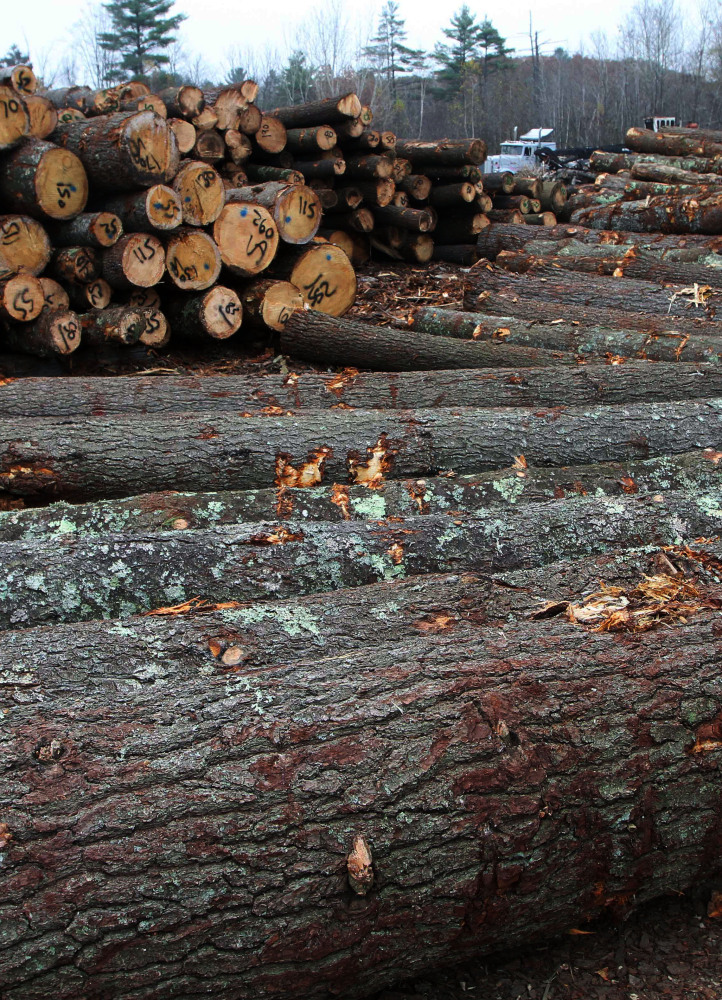GLENBURN — Gov. LePage and Maine Forest Service Director Doug Denico insist that more timber needs to be extracted from our public forests and that revenues need to be removed from the Maine Public Reserved Lands Trust to fund other governmental purposes. Neither has the best interests of Maine’s public forests in mind by pursuing this destructive, precedent-setting proposal.
Today, they want to lower energy costs. What will it be tomorrow when another governor or program gets short on cash? “We can always cut more wood on public lands,” says the governor’s precedent.
From my 30 years of Extension Forestry work, the “We’re broke – cut the woods” approach is unsustainable forestry and a blueprint for the depletion of Maine’s forests.
Maine law says that public reserved lands are to be managed for sustainable forestry – timber harvesting, wildlife habitat and outdoor recreation – and that money derived from timber harvests must be re-invested in the Maine Bureau of Parks and Lands to manage these public assets.
FORESTERS, COMMISSIONERS ALARMED
In 2011, the bureau increased the annual allowable cut from 115,000 cords per year to 141,500 cords per year based on forest science methods. Over the past two years, Mr. Denico has advocated for higher cutting levels. The numbers pitched vary from 160,000 to 220,000 cords per year.
This push to treat Maine’s public lands like a cash cow has alarmed many foresters and public land managers who have made Maine’s public reserved lands some of the highest-quality forests in Maine.
For example, five former commissioners of the Department of Conservation, who were responsible for Maine’s public forests from 1975 to 2010, co-authored a letter opposing changes proposed by Gov. LePage and Maine Forest Service Director Denico.
I can say with certainty that foresters usually don’t mess around in each other’s business. That five former state conservation commissioners declared their concerns in writing to the Commission to Study the Public Reserved Lands Management Fund speaks to the gravity of apprehension about the direction this administration wants to take with Maine’s public lands.
Steve Swatling, recently retired forester-manager of the Bigelow Unit of the Bureau of Parks and Lands, testified before the commission that the bureau lacks the tools needed for applying scientific forest management out in the field, including up-to-date forest inventory systems and forest modeling programs that help determine timber harvest levels and methods in the bureau’s forests.
When Swatling brought this up to his superiors, he was reprimanded and told, “Go cut wood.” He said he retired early because he could no longer ethically support the overcutting that he was being asked to do by the bureau.
In early September, former bureau Director Tom Morrison stated that the desired outcome for the bureau’s forests is to grow a diversity of trees “to biological maturity.” This is what is unique about sustainable forest management on Maine’s public forests.
Trees have been grown and shaped long-term, then harvested at biological maturity, which yields higher economic income, while conserving wildlife habitat and opportunities for outdoor recreation.
In my forester’s mind, growing trees on this basis stands with great distinction compared to industrialized forestry, which considers trees over 60 years of age to be a drag on forest growth, which is simply not true. That Maine’s public forests have more timber per acre than the average industrialized forest should be celebrated and supported.
GOOD FORESTRY IS PATIENT FORESTRY
It has taken over 30 years of long-term stewardship to produce these well-managed forests. Gov. LePage’s and Maine Forest Service Director Denico’s schemes for short-term economic gain put all of this at risk.
My forestry mentor, the late Oric O’Brien of Lincoln, taught me valuable lessons early on. He said that good forestry is patient forestry, that I’d be lucky if I got to re-enter some of my harvested forests a third time within my lifetime.
It takes a light hand and more than a lifetime to grow older, high-value trees like those in the Maine Bureau of Parks and Lands forests, which belong to the people of Maine. It takes about five seconds to bring one of those trees down.
I hope the Legislature attends thoughtfully to the agenda at hand and recognizes that the LePage administration’s motivations do not align with laws and practices that have shaped our public forests into what they are today: real, sustainable forests.
Send questions/comments to the editors.


